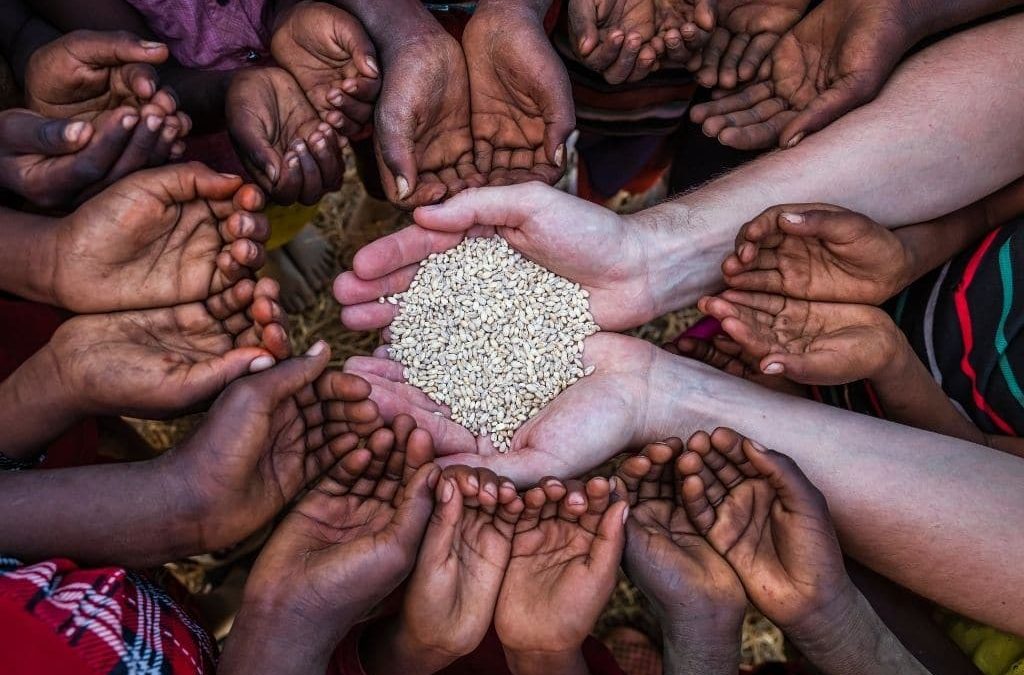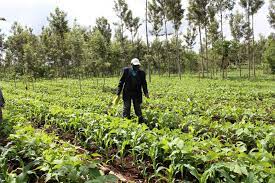Food insecurity is a complex and pressing issue that affects many individuals and families across the globe. Understanding how to measure food insecurity is essential for identifying those in need and developing effective solutions. This post will delve into the various methods and indicators used to assess food insecurity and its impact on communities.
Measuring food insecurity typically involves a combination of quantitative and qualitative methods. One widely used tool is the USDA’s Food Security Survey Module, which assesses household food security by asking a series of questions about food access, availability, and utilization over the past year. This module categorizes households into four levels of food security: high, marginal, low, and very low, based on their responses.
In addition to surveys, researchers often utilize secondary data from national statistics, such as income levels, unemployment rates, and food prices, to identify geographic areas at risk of food insecurity. Community-level assessments, including focus groups and interviews, can provide deeper insights into the local factors contributing to food insecurity, such as cultural attitudes towards food and barriers to accessing resources.
Importance of measuring food insecurity
Measuring food insecurity is crucial for several reasons, impacting public health, policy-making, and community welfare.
- Public Health Implications
Food insecurity is directly linked to various health issues, including malnutrition, obesity, and chronic diseases such as diabetes and heart disease. By measuring food insecurity, researchers and health professionals can identify at-risk populations and develop targeted interventions to improve nutrition and health outcomes.
For instance, understanding the prevalence of food insecurity among low-income families can lead to initiatives that provide access to healthy foods, reducing the risk of diet-related diseases.
- Policy Development and Resource Allocation
Quantifying food insecurity enables policymakers to make informed decisions regarding resource allocation and program development. Accurate data helps governments and organizations identify areas with the highest need, ensuring that food assistance programs and services reach vulnerable populations effectively.
Additionally, measuring food insecurity can drive advocacy for policy changes, such as increased funding for food assistance programs, improvements in local food systems, and strategies to address the root causes of poverty and inequality.
- Economic Impact
Food insecurity has broader economic implications as well. Households struggling with food access often experience increased healthcare costs, decreased productivity, and higher levels of stress, which can affect educational outcomes for children.
By measuring food insecurity, stakeholders can recognize these economic burdens and advocate for policies that address food access, ultimately promoting economic stability and growth within communities.
- Social Justice and Equity
Food insecurity disproportionately affects marginalized communities, including low-income families, people of color, and rural populations. Measuring food insecurity allows for a better understanding of these disparities and can help drive initiatives aimed at promoting social equity. By highlighting the systemic issues contributing to food insecurity, stakeholders can work towards more equitable food systems that ensure all individuals have access to sufficient, safe, and nutritious food.
Measuring food insecurity is vital for improving public health, shaping effective policies, understanding economic impacts, and promoting social justice. Comprehensive data on food insecurity not only informs interventions and resource allocation but also raises awareness of the systemic issues that perpetuate hunger and inequality, ultimately fostering a more equitable and healthy society.
How to measure food insecurity
Measuring food insecurity involves various methodologies that capture the complexity of food access and availability. These methods can be broadly categorized into quantitative approaches, qualitative assessments, and composite indicators. Below are detailed descriptions of key methods used to measure food insecurity.
- Surveys and Questionnaires
The most common approach to measure food insecurity is through structured surveys. The USDA’s Food Security Survey Module is a widely recognized tool that employs a series of questions to assess household food security over the past 12 months. The questions focus on experiences related to food access, such as:
- Affordability: Asking if the household had enough money to buy food.
- Quality and Variety: Inquiring whether the household had to cut back on the quality or variety of food.
- Hunger: Assessing whether any household members experienced hunger due to a lack of resources.
Responses to these questions are used to categorize households into four levels of food security: high, marginal, low, and very low. This classification provides a standardized way to compare food insecurity across different demographics and regions.
- Qualitative Assessments
In addition to quantitative surveys, qualitative assessments offer in-depth insights into the experiences of individuals and households facing food insecurity. These may include:
- Focus Groups: Group discussions with community members can reveal common themes, barriers, and coping strategies related to food access. This method allows participants to share their experiences in their own words, providing rich contextual information.
- Interviews: Conducting one-on-one interviews can provide a deeper understanding of individual circumstances, challenges, and the impact of food insecurity on daily life.
Qualitative data can complement quantitative findings by highlighting the social, cultural, and psychological factors that contribute to food insecurity.
- Secondary Data Analysis
Researchers often utilize existing datasets to analyze trends in food insecurity. This can include:
- Census Data: Information on income levels, poverty rates, and demographic characteristics can help identify populations at risk of food insecurity.
- Health Data: Analyzing health outcomes in conjunction with food insecurity measures can highlight the public health implications of inadequate food access.
By integrating various datasets, researchers can assess correlations between food insecurity and factors such as income, education, and employment status.
- Composite Indicators
Some studies create composite indices that combine multiple measures to assess food insecurity comprehensively. For instance, the Global Hunger Index combines data on undernourishment, child wasting, and child stunting to provide a multifaceted view of hunger and malnutrition across countries. These composite indicators can help policymakers and researchers track progress over time and make international comparisons.
- Geospatial Analysis
Geospatial analysis employs geographic information systems (GIS) to map food insecurity and identify areas with limited access to food resources, often referred to as “food deserts.” This method can visualize disparities in food access based on geographic location, population density, and socioeconomic status. By combining food access data with demographics, policymakers can identify target areas for food assistance programs and interventions.
Each approach provides valuable insights, contributing to a comprehensive understanding of food insecurity and informing effective interventions and policies to combat hunger. Through a combination of these methodologies, stakeholders can identify at-risk populations, monitor trends over time, and address the underlying causes of food insecurity.
Methods of Measuring Food Insecurity
Measuring food insecurity involves various methodologies that capture the complexity of access to and availability of food. Here are the primary methods used to assess food insecurity:
- Surveys and Questionnaires
Surveys are the most common method for measuring food insecurity, often using standardized tools to gather data from households. Key instruments include:
- USDA Food Security Survey Module: This module consists of a series of questions that assess food access and experiences over the past year. It categorizes households into different levels of food security: high, marginal, low, and very low. The survey addresses aspects such as affordability, quality, and experiences of hunger.
- Core Food Security Module: Similar to the USDA module, this includes questions that evaluate the severity and frequency of food insecurity experiences, allowing for detailed analysis of household food security status.
- Qualitative Assessments
Qualitative methods provide a deeper understanding of the lived experiences of individuals and families facing food insecurity. These methods include:
- Focus Groups: Group discussions with community members can uncover common challenges, coping strategies, and cultural factors influencing food access. This approach facilitates dialogue, allowing participants to express their concerns and experiences related to food insecurity.
- In-Depth Interviews: Conducting individual interviews allows for a more personalized exploration of specific circumstances, barriers, and the impact of food insecurity on daily life. This qualitative data can complement quantitative findings, offering richer context.
- Secondary Data Analysis
Researchers often analyze existing datasets to understand food insecurity trends and its correlates. This includes:
- Census Data: Information on demographics, income levels, and poverty rates helps identify populations at risk of food insecurity.
- Health Data: Analyzing health outcomes alongside food insecurity measures can reveal the public health implications of inadequate food access, informing interventions aimed at improving health.
- Composite Indices
Composite indicators combine multiple measures to provide a comprehensive view of food insecurity. Examples include:
- Global Hunger Index (GHI): This index combines data on undernourishment, child wasting, and child stunting to assess hunger levels globally. It allows for comparisons across countries and regions, highlighting areas needing attention.
- Food Insecurity Experience Scale (FIES): This tool measures the severity of food insecurity based on individuals’ experiences and behaviors related to food access, offering a nuanced understanding of food insecurity across different populations.
- Geospatial Analysis
Geospatial methods utilize Geographic Information Systems (GIS) to map food insecurity and identify areas with limited access to food resources, often referred to as “food deserts.” This approach visualizes disparities in food access based on geographic location, helping policymakers target interventions more effectively. Geospatial analysis can also assess the proximity of food retailers to vulnerable populations.
- Community-Based Participatory Research (CBPR)
CBPR involves community members in the research process, ensuring that the voices of those experiencing food insecurity are heard and considered. This method emphasizes collaboration and can lead to more relevant and actionable findings. By involving the community, researchers can better understand local contexts and develop tailored interventions that address specific needs.
Measuring food insecurity employs a variety of methods, including surveys, qualitative assessments, secondary data analysis, composite indices, geospatial analysis, and community-based participatory research. Each method provides valuable insights, helping to create a comprehensive understanding of food insecurity and informing effective interventions and policies to combat hunger.
Challenges in Measuring Food Insecurity
Measuring food insecurity presents several challenges that can affect the accuracy and reliability of data collected. Here are some of the key challenges:
- Definitional Ambiguities
Food insecurity can be defined and understood in various ways, which can lead to inconsistencies in measurement. Different surveys and studies may focus on different aspects, such as availability, access, utilization, or stability of food. This lack of a universal definition can complicate comparisons across studies and hinder the development of standardized metrics.
- Cultural and Contextual Differences
Food insecurity manifests differently across cultures and regions, influenced by local food systems, social norms, and economic conditions. Surveys that do not consider these contextual factors may not accurately capture the experiences of individuals in diverse communities. This can lead to underreporting or misinterpretation of food insecurity issues in certain populations.
- Respondent Bias and Recall Issues
Surveys often rely on self-reported data, which can be subject to bias. Respondents may underreport their experiences due to stigma or shame associated with food insecurity. Additionally, recall bias can affect the accuracy of responses; individuals may struggle to remember food-related experiences over a long recall period, leading to incomplete or inaccurate data.
- Temporal Variability
Food insecurity can fluctuate over time due to factors such as seasonal changes, economic conditions, and emergencies (e.g., natural disasters, pandemics). Capturing these temporal dynamics in surveys can be challenging, as a single point-in-time assessment may not accurately reflect ongoing food access issues. Longitudinal studies may provide more insights but are resource-intensive.
- Sampling Issues
Obtaining representative samples can be difficult, especially in marginalized or hard-to-reach populations. Certain groups, such as the homeless or transient individuals, may be excluded from traditional surveys, leading to an underestimation of food insecurity prevalence. Additionally, sampling biases can occur if certain demographics are overrepresented or underrepresented in the data collection process.
- Complexity of Food Systems
Food insecurity is influenced by a wide range of interconnected factors, including socioeconomic status, employment, health, and local food environments. Capturing this complexity requires comprehensive data collection and analysis, which can be challenging due to limited resources, time, and funding. Simplistic measures may overlook critical underlying causes of food insecurity.
- Data Integration Challenges
Combining data from different sources, such as surveys, health statistics, and geographic information systems, can be complicated. Differences in methodologies, definitions, and measurement scales can hinder the integration of data, making it difficult to develop a comprehensive understanding of food insecurity.
Addressing these challenges requires thoughtful design of data collection methods, consideration of contextual factors, and collaboration with communities to ensure accurate and meaningful assessments of food insecurity. By overcoming these obstacles, stakeholders can better understand and address the multifaceted nature of food insecurity, leading to more effective interventions and policies.
Solution to challenges in Measuring Food Insecurity
Addressing the challenges in measuring food insecurity requires a multifaceted approach that involves methodological improvements, community engagement, and policy considerations. Here are some potential solutions to these challenges:
- Standardizing Definitions and Metrics
To overcome definitional ambiguities, it’s essential to develop and adopt standardized definitions and metrics for food insecurity. Collaborations among researchers, policymakers, and practitioners can lead to the establishment of a universally accepted framework that incorporates various dimensions of food insecurity. This framework should be adaptable to different cultural and regional contexts while maintaining core measurement principles.
- Cultural Sensitivity in Surveys
To capture the diverse experiences of food insecurity across different populations, surveys should be designed with cultural sensitivity in mind. Engaging community members in the survey design process can help ensure that questions are relevant and appropriately framed. This involvement can also help identify culturally specific factors affecting food access, leading to more accurate data collection.
- Reducing Respondent Bias
To mitigate bias in self-reported data, researchers can employ mixed-methods approaches that combine quantitative surveys with qualitative interviews or focus groups. Providing anonymous surveys may also encourage more honest responses. Additionally, conducting surveys in multiple languages and using trained interviewers who are familiar with the community can enhance trust and improve response accuracy.
- Longitudinal Studies
Implementing longitudinal studies can help capture the temporal variability of food insecurity. By collecting data over multiple time points, researchers can better understand how food access fluctuates in response to economic changes, seasons, and emergencies. This approach provides a more comprehensive view of food insecurity dynamics and helps identify trends and patterns.
- Inclusive Sampling Strategies
To ensure that hard-to-reach populations are represented, researchers should adopt inclusive sampling strategies. This may involve using targeted outreach efforts, partnering with local organizations that serve marginalized communities, and employing alternative sampling methods (e.g., snowball sampling or community-based participatory research). Ensuring diverse representation will yield more accurate assessments of food insecurity prevalence.
- Holistic Data Collection
Capturing the complexity of food insecurity requires comprehensive data collection that considers various contributing factors, such as socioeconomic status, health, and local food environments. Researchers should utilize composite indicators that combine multiple measures, along with geospatial analysis, to provide a more nuanced understanding of food insecurity and its determinants.
- Data Integration and Collaboration
Promoting collaboration among different sectors (e.g., public health, agriculture, and social services) can facilitate data integration and improve the understanding of food insecurity. Establishing data-sharing agreements among organizations can enable researchers to combine datasets, leading to richer analyses and more informed policy recommendations.
- Community Engagement and Education
Engaging communities in the research process is essential for ensuring that measurements reflect their realities. Educating community members about food insecurity issues can empower them to advocate for their needs and participate in local assessments. This collaborative approach fosters trust, enhances the relevance of research, and can lead to community-driven solutions.
By fostering collaboration among researchers, communities, and policymakers, stakeholders can develop more accurate and meaningful assessments of food insecurity, ultimately leading to more effective interventions and policies to combat hunger.
Conclusion
To understand and address food insecurity, it’s crucial to measure it accurately. How to measure food insecurity involves evaluating multiple factors such as access to nutritious food, economic stability, and support systems. Utilizing tools like the USDA’s Food Security Survey and the Food Insecurity Experience Scale (FIES) allows for a comprehensive assessment of both the extent and severity of food insecurity.
By analyzing these measurements, policymakers and organizations can develop targeted strategies to effectively combat food insecurity and enhance community well-being.




